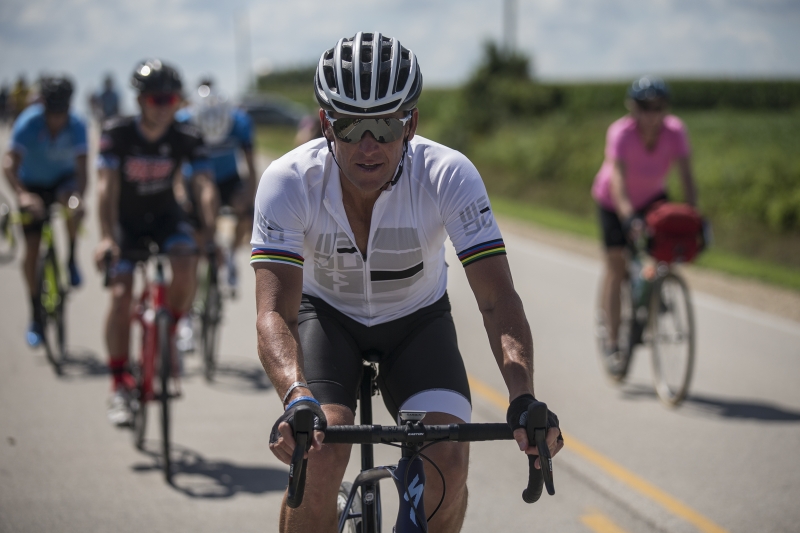Lance Armstrong attempted to come out as likable.
The subject of ESPN’s two-part documentary titled Lance, the once-worshiped-turned-infamous cycler tried to soften his image by sounding approachable and passive.
It still didn’t work.
If anything, the documentary proved that he hasn’t learned any lessons, and that he’s still one of the biggest villains sport has seen. He even goes as far as to justify his behavior.
“We did what we had to do to win,” Armstrong said. “It wasn’t legal, but I wouldn’t change a thing, whether it’s losing a bunch of money [and] going from hero to zero.”
In an attempt to save himself and his reputation, Armstrong took down the people closest to him and fellow cyclists and ruined their lives.
Greg LeMond, Betsy and Frankie Andreu, Emma O’Reilly, and Filippo Simeoni all had parts of their lives ruined by Armstrong. It’s certain that more names could be added to that list.
O’Reilly was the soigneur for the United States Postal Service cycling team and decided to testify against Armstrong in 1998 and 1999. She had helped Armstrong cover up bruising and injection marks with makeup, and also assisted in transporting drugs and getting rid of evidence.
After she contributed to the 2003 book, L.A. Confidential: The Secrets of Lance Armstrong, Armstrong sued her for libel and attacked her in the media.
“Lance also tried to discredit me by publicly referring to me as a prostitute and an alcoholic,” O’Reilly said in her affidavit. “The lawsuits against me were dropped or settled in 2006, but the damage Lance caused to my reputation still remains.”
Armstrong employed strong-arm tactics to keep the Andreus silent for years regarding his doping.
In October of 1996, the Andreus traveled to Indianapolis to see Armstrong while he was being treated for testicular cancer.
The Andreus overheard Armstrong tell doctors about the amount of performance-enhancing drugs he had taken, namely erythropoietin (EPO), human growth hormone, and testosterone. In his 2013 tell-all interview with Oprah, he rejected the question twice as to whether Betsy had lied about overhearing that conversation.
“I’m not going to take that on,” Armstrong said. “I’m laying down on that one.”
The Andreus testified in a contract dispute against Armstrong in 2006. The dispute was between Armstrong and SCA Promotions, which had kept a multi-million dollar bonus from Armstrong because of doping allegations.
Armstrong and his camp called Betsy crazy and that she was only motivated by “bitterness, jealousy, and hatred.” Standing up against Armstrong cost Frankie jobs, and the couple lost thousands of dollars due to their legal battles with Armstrong.
It is this type of abuse that lasted for years that makes Armstrong the villain that he is today. He continues to blame everyone else for his mistakes and for his disownment when really it was all at his own doing.
It isn’t necessarily the doping and years of cheating that vilifies Armstrong. It’s the incessant lying, cheating, and corruption.
For example, look at Livestrong, the nonprofit organization that has helped to support people with cancer. Armstrong is the founder of the company, which helped millions of people worldwide who have been affected by cancer.
But to Armstrong, everything was about his brand.
He made everything about himself, including his incredible recovery from Stage 4 cancer to boost his own athletic portrayal. He was a mega-superstar, something that cycling hadn’t ever seen before. His brand was massive.
So, when everything came crashing down, the brand would, too. When Livestrong decided to ban Armstrong in 2012, he fired back, calling everyone involved in the decision a bunch of “cowards.”
At an organization whose goal is to help people survive a deadly disease that he himself miraculously beat, he made the whole situation about himself and forgot about cancer.
At the end of the documentary, Armstrong got emotional over Jan Ullrich’s entry in a psychiatric hospital. He said that he and Ullrich are similar, as they both had difficult upbringings, but that they’re both victims because of an overaggressive and harsh public downfall while people like Ivan Basso and George Hincapie didn’t take as bad of a fall.
“Basso is no different than any of us, yet they disgraced Marco Pantani,” Armstrong said. “They destroy him in the press. They kick him out of the sport, and he’s dead. … The country of America idolizes, worships, glorifies George Hincapie, invites him to races, gives him jobs, buys his s—. And they disgrace and destroy me.”
However, none of those guys bullied or sued others because they doped. Armstrong did do that and knew he was guilty. Those guys admitted they were wrong, and while they shouldn’t be glorified, comparing them to himself is disrespectful.
Armstrong had friends at the UCI who wanted to protect him for the betterment of the sport, even though he almost brought it all down due to the public shame.
For 13 years, Armstrong denied everything. In the Oprah interview, he said he owed apologies to several people.
“I owe them apologies, and whenever they’re ready, I will give them,” he said.
He included Floyd Landis, who was the first of his former teammates to speak out, on that list of apologies. Yet, he still hasn’t issued them.
“I could be Floyd Landis, waking up every day a piece of s—,” Armstrong said in the documentary.
He said he wouldn’t change a thing, and he hasn’t changed the fact that he’s still what he was in 1996, 2005, and 2013: a bully and a villain.




